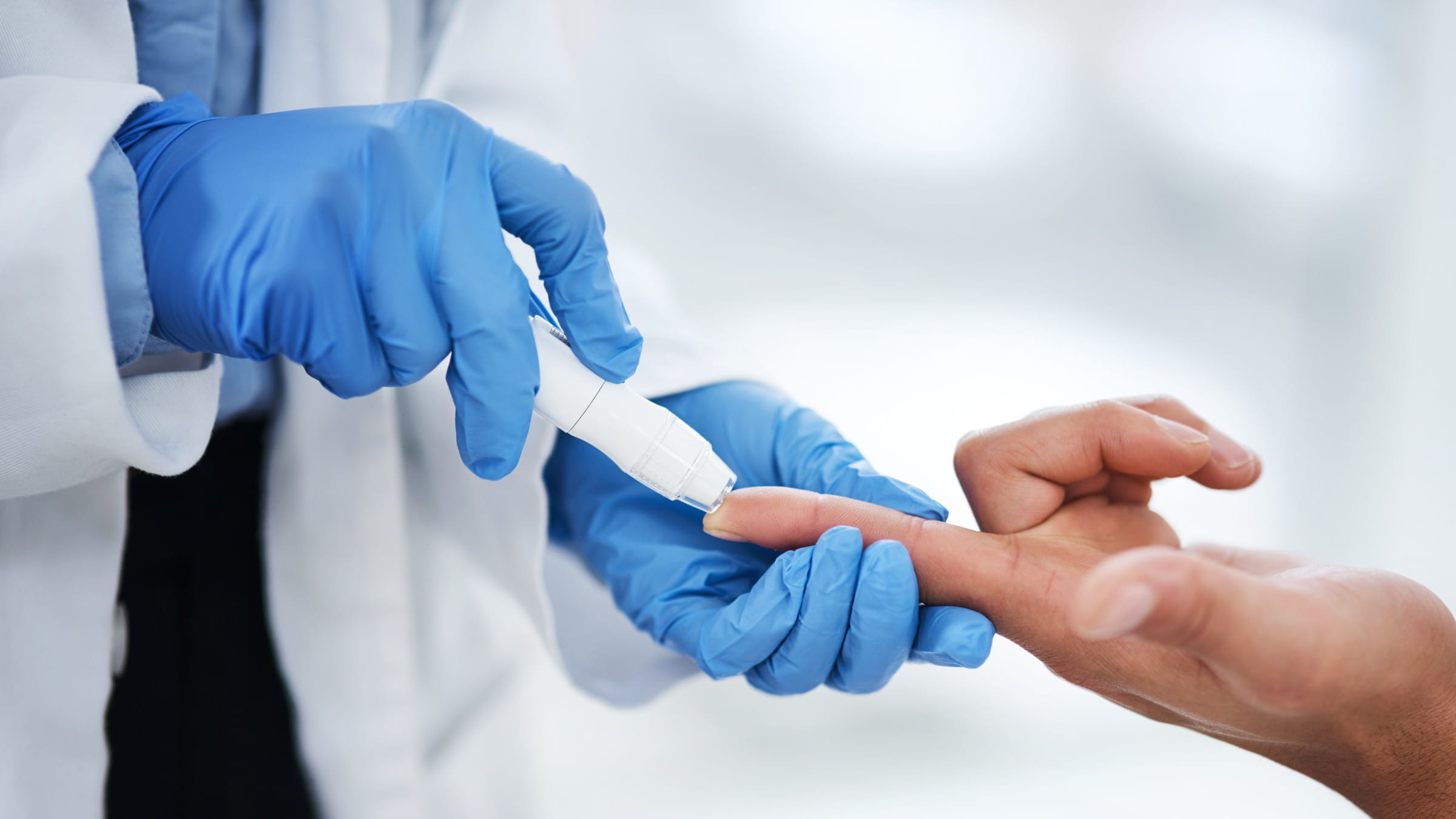
Editor’s note: As what we know about COVID-19 evolves, so could the information in this story. Find our most recent COVID-19 articles here and learn the latest in COVID-19 prevention at the Centers for Disease Control and Prevention. Some photos and videos on this site were filmed prior to the COVID-19 outbreak or may not reflect current physical distancing and/or masking guidelines.
As we continue to learn more about COVID-19, we’re finding that some recovering patients face another concerning diagnosis: diabetes.
It’s unclear whether COVID-19 itself causes the rise in blood sugar that indicates diabetes, but it’s more likely that it brings problems to the surface in people who are already at risk. And it’s estimated that millions of Americans are at risk. As many as 37 million Americans have type 2 diabetes and another 96 million have prediabetes, and many of them don’t know it.
Why blood sugar levels rise in some COVID-19 patients
A rise in blood sugar associated with COVID-19 can most likely be attributed to one of two things: the “inflammation cascade” that COVID-19 can cause throughout the body, or the use of steroids to bring that inflammation into check. Both are linked to insulin resistance, which can lead to higher blood sugar levels.
Insulin is produced by the pancreas and allows the body to absorb sugar from the foods we eat. If the body is unable to create or fully use insulin, sugar levels can rise and, over time, lead to diabetes and other serious health problems.
When those higher sugar levels appear alongside COVID-19, it’s likely they were already high or about to tip the scales. Think of COVID-19 inflammation and steroid treatment as stress tests for the pancreas: If the pancreas can’t handle the stress, it can’t produce enough insulin to keep blood sugar levels down.
If you don’t have risk factors for diabetes, you probably won’t experience a blood sugar spike associated with COVID-19 or steroid treatment.
How long do blood sugar levels remain elevated?
A recent study showed that 41% of hospitalized COVID-19 patients with newly diagnosed diabetes had normal or slightly above average blood sugar levels about one year after they recovered. If you have COVID-19 and develop a temporary rise in blood sugar, it could mean you’ll never face diabetes. But it also could mean the diabetes is in remission, or on hold. This is a signal that diabetes is in your future, so take steps now to slow its progression.
How to keep blood sugar in check
A temporary high blood sugar level is a warning sign, especially if you have risk factors.
Be proactive and monitor your blood sugar level by having it checked by a health care professional at least once a year. Beyond that, the key is to be as healthy as possible. And “healthy” means eating heart healthy and being physically active. You don’t have to join a gym or run a marathon, but increasing physical activity helps to decrease insulin and give the pancreas a longer life.
If you’ve fallen prey to the “COVID-15” weight gain associated with lockdown and working from home, you could be at risk of developing type 2 diabetes sooner. Research has shown that dropping 15 pounds can dramatically slow the progression of type 2 diabetes.
And if you have risk factors, don’t just accept that developing diabetes is inevitable and there’s nothing you can do to prevent it. You have control over when you develop diabetes, but you have to actively participate in the process, so don’t give up. If you feel like you’re not doing well due to the stress of the pandemic, you can start over again.
Does this happen only with COVID-19?
High blood sugar can be referred to as hyperglycemia, and there has long been talk about “stress hyperglycemia” — a rise in blood sugar levels in patients with acute illnesses. The pancreas can’t handle the stress during the illness; but hopefully it’s healthy enough to keep functioning adequately when the patient goes back to everyday life. Data on cardiology patients shows that about one-third to one-half of patients have normal blood sugar levels three to six months after experiencing stress hyperglycemia.
If you already have diabetes, take precautions
If your blood sugar levels indicate late pre-diabetes or diabetes, that sugar is potentially impairing the ability of your immune system to work. COVID-19 can make it worse, and you’re at risk for hospitalization and serious complications from the disease. Getting vaccinated is the best way to protect yourself. If you’re not vaccinated, consider the potential risks before spending time in any crowds.
And stay on top of your diabetes. Check your sugar regularly to monitor for any changes over time.






